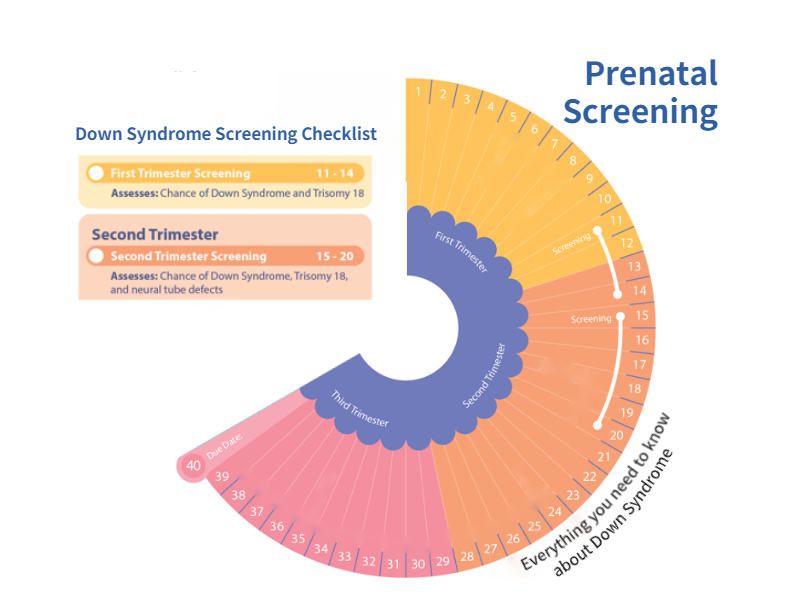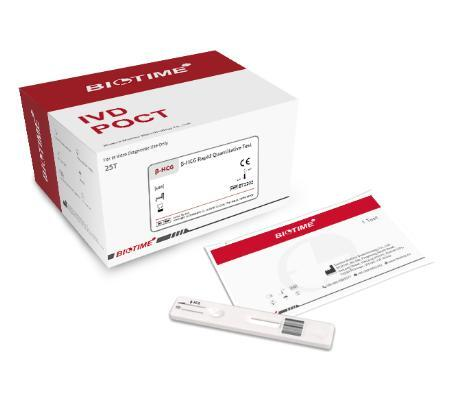Down Syndrome Facts, Diagnoses and β-hCG Blood Test
Down syndrome, also known as Trisomy 21, and an estimated six million people with Down syndrome worldwide. There is no way to know what the future holds for any baby. In many ways, babies with Down syndrome are just like other babies. All babies need to be fed, have their diapers changed, and have playtime, but, most of all, they need to be loved. These needs are the same for a baby with Down syndrome.
Is it inherited?
Most of the time, Down syndrome isn't inherited. It's caused by a mistake in cell division during early development of the fetus.
Translocation Down syndrome can be passed from parent to child. However, only about 3 to 4 percent of children with Down syndrome have translocation and only some of them inherited it from one of their parents.
When balanced translocations are inherited, the mother or father has some rearranged genetic material from chromosome 21 on another chromosome, but no extra genetic material. This means he or she has no signs or symptoms of Down syndrome, but can pass an unbalanced translocation on to children, causing Down syndrome in the children.
Risk factors
Some parents have a greater risk of having a baby with Down syndrome.
Risk factors include:
Ø Advancing maternal age. A woman's chances of giving birth to a child with Down syndrome increase with age because older eggs have a greater risk of improper chromosome division. A woman's risk of conceiving a child with Down syndrome increases after 35 years of age. However, most children with Down syndrome are born to women under age 35 because younger women have far more babies.
Ø Being carriers of the genetic translocation for Down syndrome. Both men and women can pass the genetic translocation for Down syndrome on to their children.
Ø Having had one child with Down syndrome. Parents who have one child with Down syndrome and parents who have a translocation themselves are at an increased risk of having another child with Down syndrome. A genetic counselor can help parents assess the risk of having a second child with Down syndrome.
Women should be given information regarding Down's syndrome screening at their first appointment with a healthcare professional.
This should include:
First trimester combined screening
This involves a blood test and an ultrasound scan.
Women may be offered 2 ultrasounds at the beginning of their pregnancy: dating scan between weeks 8 and 14 of pregnancy nuchal translucency scan between 11 weeks to 14 weeks and 6 days of pregnancy.
If pregnant women choose to be screened for Down syndrome, the dating scan and the nuchal translucency scan can be carried out at the same time, between 11 weeks and 13 weeks.
At the ultrasound scan appointment, the sonographer measures the thickness of the nuchal translucency at the back of baby’s neck.
Mother have the blood test between 9 and 12 weeks. The blood test measures the levels of two different hormones that occur naturally in patient’s blood during pregnancy. When there’s a genetic condition the levels of these hormones are usually abnormal.
The information from the blood test is combined with the age and the nuchal translucency measurement and used to work out woman’s individual chance of having a baby with Down syndrome.
Second trimester screening
If it has not been possible for pregnant women to have the combined screening test in early pregnancy, they will be offered a different blood test between 15 to 20 weeks.
This test is β-hCG and measures human chorionic gonadotropin associated with pregnancy. This information is about individuals chance of having a baby with Down syndrome.

What is hCG and what are the two types of hCG tests?
Human chorionic gonadotropin (hCG) hormone, often called the pregnancy hormone, is initially made by the lining cells of the embryo and later by the cells of the placenta. Its function is to nourish the egg after it has been fertilized.
The hCG level reaches its peak anywhere between 9 and 12 weeks of pregnancy. It then goes on declining until it remains steady for the rest of the pregnancy.
Two types of beta hCG testing are usually used
1. Qualitative testing: Also known as the urine pregnancy test, the qualitative beta hCG test is the over-the-counter pregnancy test that only indicates whether you are pregnant.
2. Quantitative testing: It measures the amount of the hormone present in the blood. A blood sample will be collected from your vein and sent to the laboratory to check the blood levels of beta hCG. It is also known as
√ hCG blood pregnancy test
√ Serum hCG

Xiamen Biotime Biotechnology Quantitative β-hCG blood test can be one of the best indicator for the healthy pregnancy and healthy baby bringing into life. Quantitative β-hCG blood test helps to confirm:
Ø Possible pregnancy
Ø Determine the approximate age of the fetus (baby)
Ø Check if there is an ectopic pregnancy (an abnormal pregnancy)
Ø Diagnoses of possible miscarriage
Ø Screen if the baby has Down’s syndrome
Reference: